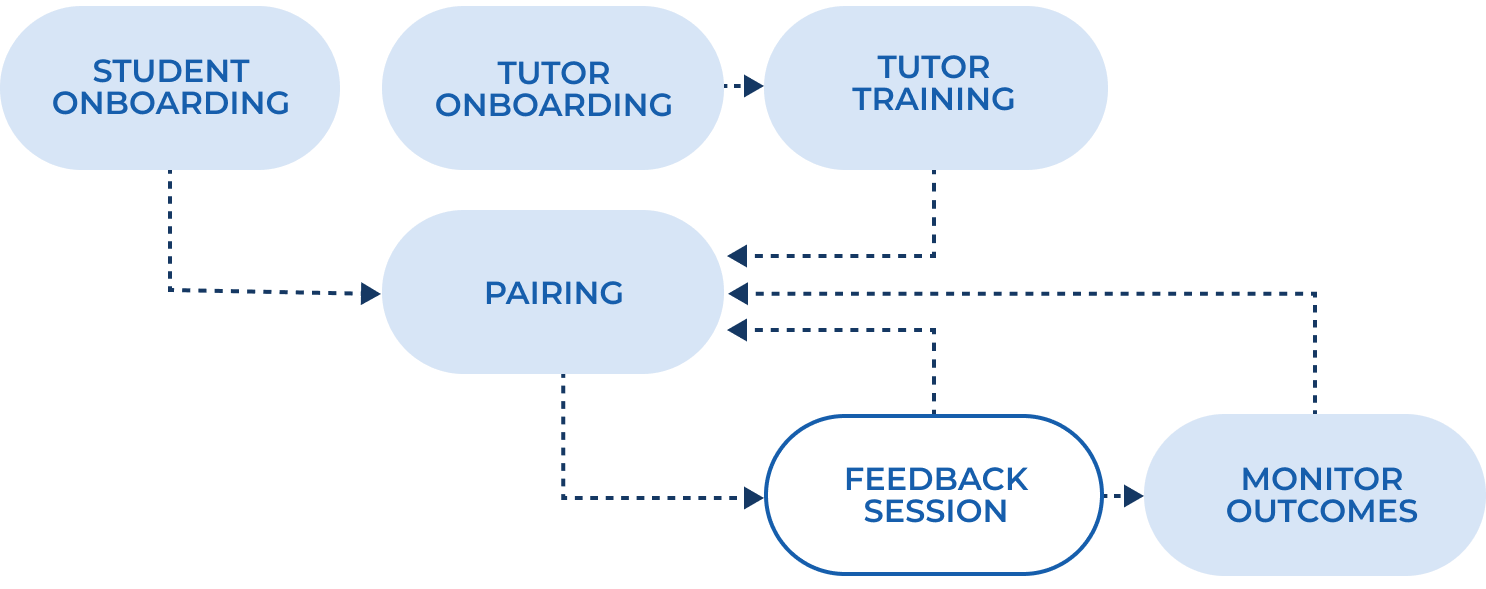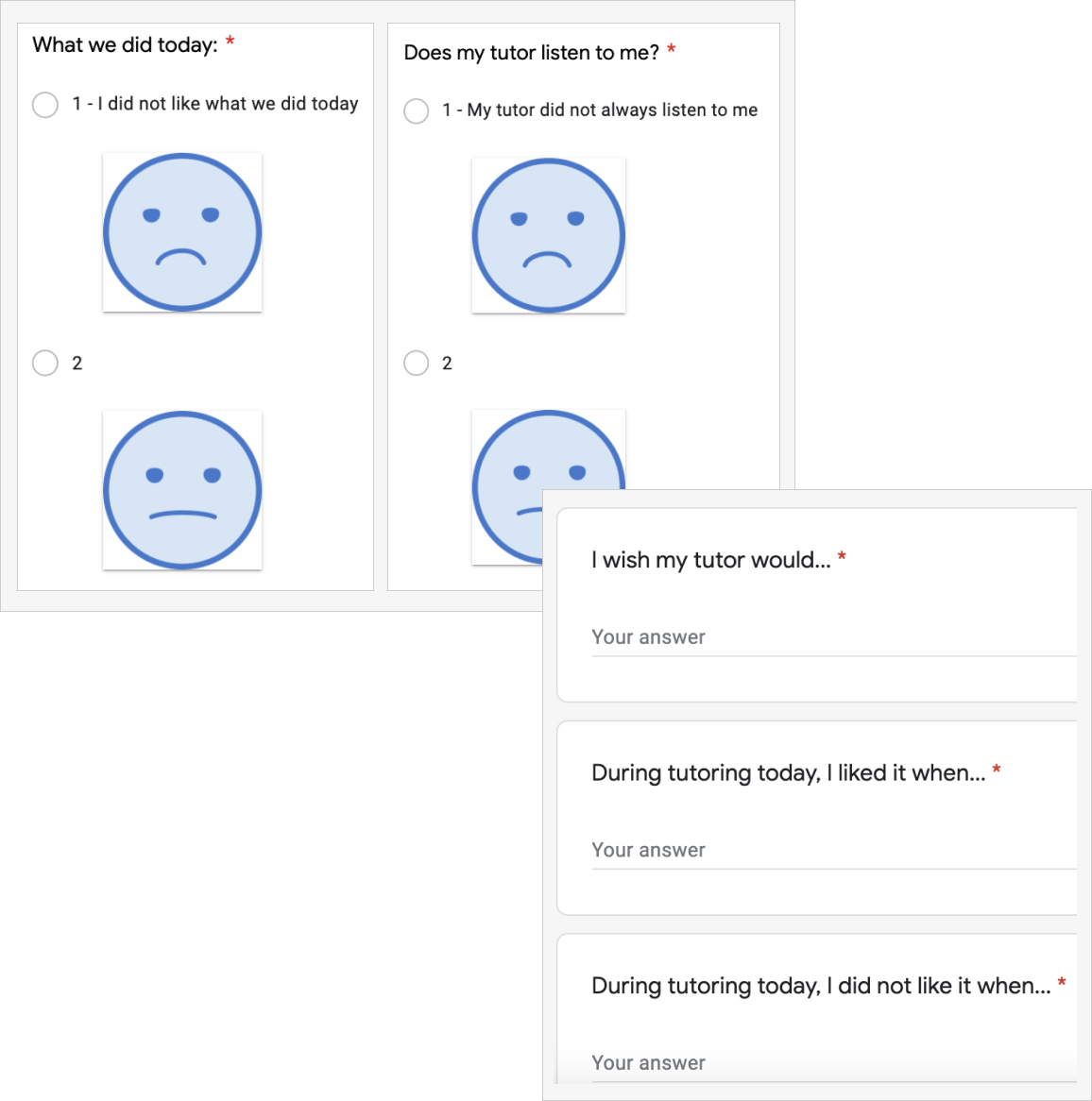Facilitating empathic conversations that strengthen a pair's relationship over time.

Once tutoring sessions start, tutors are encouraged to regularly fill out a Feedback Form with their student(s).
The form gives students an opportunity to express their thoughts, feelings, and opinions surrounding their tutoring session(s). Likewise, tutors can use this feedback to improve how they structure their lessons.

We concluded from our Spring research that creating an effective feedback system is an important step in maintaining and improving the health of student-tutor pairs.
To understand how Feedback Sessions are currently conducted, we examined the organization’s Feedback Form and the responses that pairs have given.
We learned that in general, the current form tends to be repetitive, making the questions tedious and less informative. The data collected from the form is also not used effectively.
Our team planned to redesign the form to facilitate a structured conversation centered around empathic listening, rather than a series of questions to check off. We believed that this redesign would elicit helpful feedback from students and tutors while also strengthening the pair’s relationship.
Through one of our expert interviews, we were introduced to the ORS (Outcome Rating Scale) and SRS (Session Rating Scale) metrics, which are commonly used by clinicians to gather feedback from children on their sessions.
These metrics have been well-documented in existing literature so we chose to adapt these questions to fit the tutoring context.
We adapted the “Session Evaluation” section of the Feedback Form to include SRS questions and gather feedback about the actual tutoring session.
The phrasing of these questions differ between younger (k-5th grade) and older (6th-12th) students, due to varying age-based needs. For younger students, we asked them some fill-in-the-blank questions to encourage them to provide more straightforward feedback and dialogue.
Both age groups answer Likert Scale questions. We chose a scale from 1-4 because we did not want to create a true neutral answer, since that would be less actionable and informative to Pandemic Professors staff. By using Likert Scale questions, we can create quantitative data for Pandemic Professors to track over time.


The “Listening Session” section of the Feedback Form is adapted from the ORS questions and gathers feedback about the student’s well-being. While tutors should apply empathic listening skills to both the Session Evaluation and Listening Session, it is particularly important for tutors to practice their skills here.
These questions do not include answer choices. Instead, tutors must mark a series of checkboxes to confirm they have gone over those questions with the student. We chose to not have tutors record responses because we believe it’s important for tutors to create a safe space for students to have unrecorded conversations about their general well-being and life outside of tutoring.

We asked current tutors to conduct a Feedback Session using the redesigned form. We then followed up with a semi-structured interview to learn about their experiences.
Current tutors and students
4 elementary school student-tutor pairs
4 middle / high school student-tutor pairs
Our research revealed the following key insights:

Tutors with younger students reported wanting more frequent Feedback Sessions than tutors with older students.

Due to the conversational nature of ORS questions, tutors preferred conducting this section at the beginning of the tutoring session.

Tutors preferred conducting ORS sessions more frequently than SRS because ORS allowed tutors to learn more about their students outside of tutoring. Additionally, SRS questions may elicit similar answers over time and should be asked less frequently.


Our findings led us to conclude that there should be a minimum frequency in which the Feedback Sessions are conducted. Tutors can choose to conduct it more frequently if needed since different pairs have different needs.
There was no clear consensus on how frequently Feedback Sessions should be conducted but overall:

Tutors should conduct sessions more frequently with younger students than older ones.

ORS should be conducted more frequently than SRS because it is more conversational and student’s answers will most likely vary.